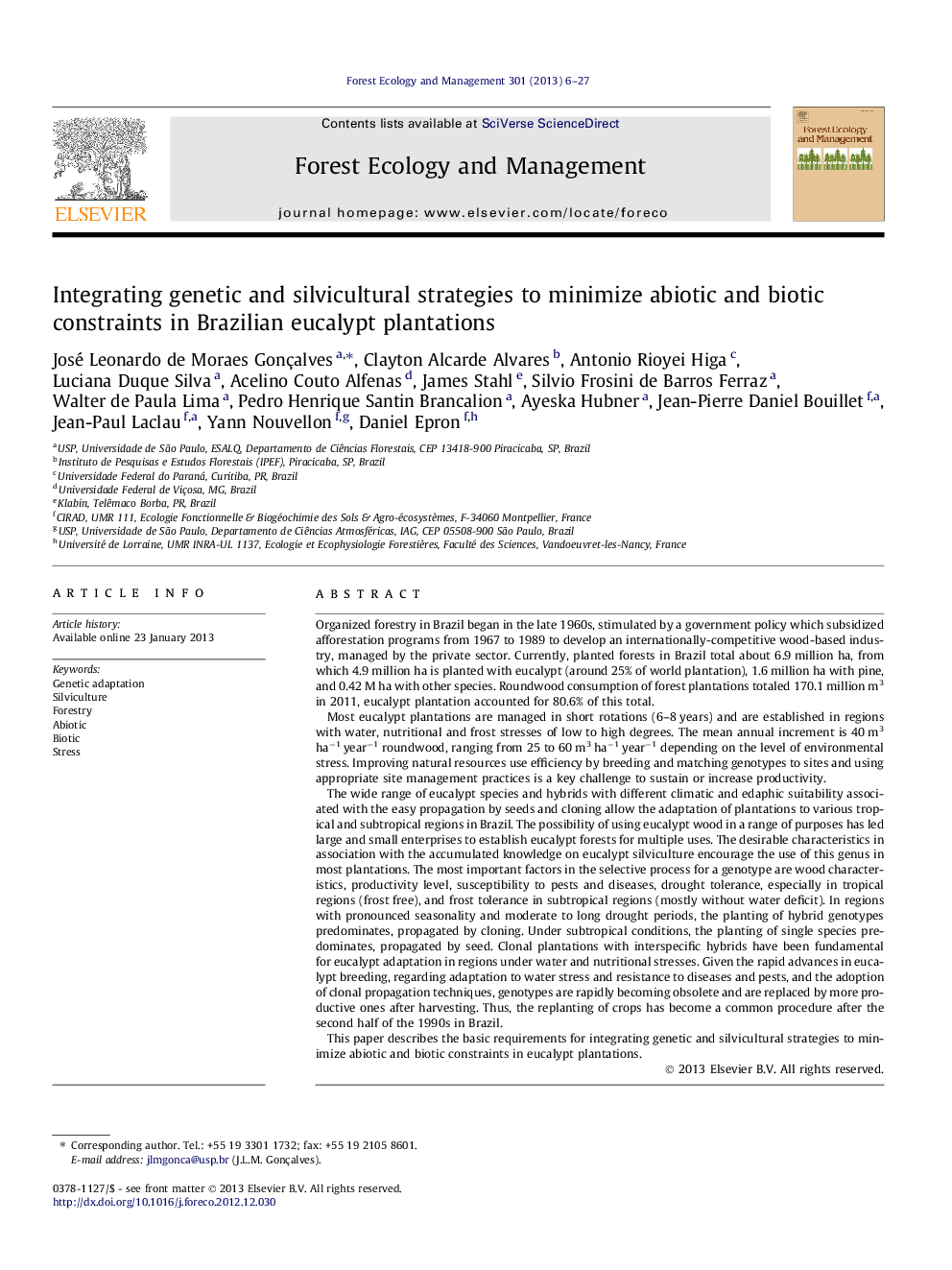| کد مقاله | کد نشریه | سال انتشار | مقاله انگلیسی | نسخه تمام متن |
|---|---|---|---|---|
| 87023 | 159227 | 2013 | 22 صفحه PDF | دانلود رایگان |

Organized forestry in Brazil began in the late 1960s, stimulated by a government policy which subsidized afforestation programs from 1967 to 1989 to develop an internationally-competitive wood-based industry, managed by the private sector. Currently, planted forests in Brazil total about 6.9 million ha, from which 4.9 million ha is planted with eucalypt (around 25% of world plantation), 1.6 million ha with pine, and 0.42 M ha with other species. Roundwood consumption of forest plantations totaled 170.1 million m3 in 2011, eucalypt plantation accounted for 80.6% of this total.Most eucalypt plantations are managed in short rotations (6–8 years) and are established in regions with water, nutritional and frost stresses of low to high degrees. The mean annual increment is 40 m3 ha−1 year−1 roundwood, ranging from 25 to 60 m3 ha−1 year−1 depending on the level of environmental stress. Improving natural resources use efficiency by breeding and matching genotypes to sites and using appropriate site management practices is a key challenge to sustain or increase productivity.The wide range of eucalypt species and hybrids with different climatic and edaphic suitability associated with the easy propagation by seeds and cloning allow the adaptation of plantations to various tropical and subtropical regions in Brazil. The possibility of using eucalypt wood in a range of purposes has led large and small enterprises to establish eucalypt forests for multiple uses. The desirable characteristics in association with the accumulated knowledge on eucalypt silviculture encourage the use of this genus in most plantations. The most important factors in the selective process for a genotype are wood characteristics, productivity level, susceptibility to pests and diseases, drought tolerance, especially in tropical regions (frost free), and frost tolerance in subtropical regions (mostly without water deficit). In regions with pronounced seasonality and moderate to long drought periods, the planting of hybrid genotypes predominates, propagated by cloning. Under subtropical conditions, the planting of single species predominates, propagated by seed. Clonal plantations with interspecific hybrids have been fundamental for eucalypt adaptation in regions under water and nutritional stresses. Given the rapid advances in eucalypt breeding, regarding adaptation to water stress and resistance to diseases and pests, and the adoption of clonal propagation techniques, genotypes are rapidly becoming obsolete and are replaced by more productive ones after harvesting. Thus, the replanting of crops has become a common procedure after the second half of the 1990s in Brazil.This paper describes the basic requirements for integrating genetic and silvicultural strategies to minimize abiotic and biotic constraints in eucalypt plantations.
► Most eucalypt plantations are managed in regions with high environmental stresses.
► Clonal plantations with interspecific hybrids strongly contributed to improve site-genotype adaptations.
► Continuous gains in productivity of eucalypt plantations have been obtained in Brazil.
► There are a number of risks associated with intensive, high yielding plantations.
► Integration of breeding and silviculture are imperative to sustain productivity.
Journal: Forest Ecology and Management - Volume 301, 1 August 2013, Pages 6–27